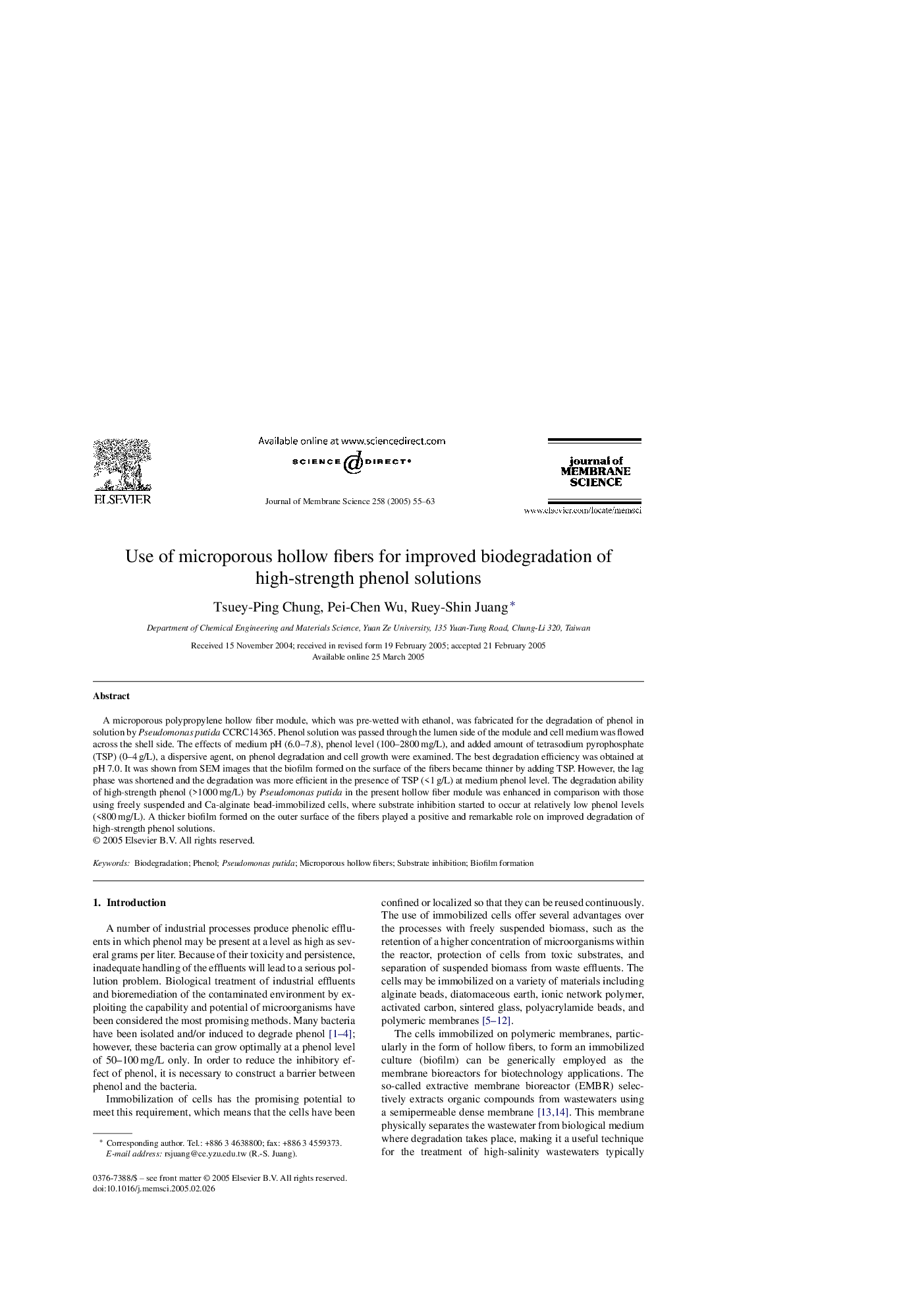| Article ID | Journal | Published Year | Pages | File Type |
|---|---|---|---|---|
| 9684758 | Journal of Membrane Science | 2005 | 9 Pages |
Abstract
A microporous polypropylene hollow fiber module, which was pre-wetted with ethanol, was fabricated for the degradation of phenol in solution by Pseudomonas putida CCRC14365. Phenol solution was passed through the lumen side of the module and cell medium was flowed across the shell side. The effects of medium pH (6.0-7.8), phenol level (100-2800Â mg/L), and added amount of tetrasodium pyrophosphate (TSP) (0-4Â g/L), a dispersive agent, on phenol degradation and cell growth were examined. The best degradation efficiency was obtained at pH 7.0. It was shown from SEM images that the biofilm formed on the surface of the fibers became thinner by adding TSP. However, the lag phase was shortened and the degradation was more efficient in the presence of TSP (<1Â g/L) at medium phenol level. The degradation ability of high-strength phenol (>1000Â mg/L) by Pseudomonas putida in the present hollow fiber module was enhanced in comparison with those using freely suspended and Ca-alginate bead-immobilized cells, where substrate inhibition started to occur at relatively low phenol levels (<800Â mg/L). A thicker biofilm formed on the outer surface of the fibers played a positive and remarkable role on improved degradation of high-strength phenol solutions.
Keywords
Related Topics
Physical Sciences and Engineering
Chemical Engineering
Filtration and Separation
Authors
Tsuey-Ping Chung, Pei-Chen Wu, Ruey-Shin Juang,
